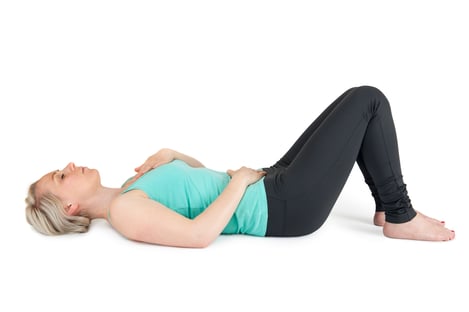 In The Wizard of Oz, Dorothy woke up after a terrible storm in a world she didn’t recognize. The normal that she had known no longer existed. We are “not in Kansas” (or Indiana, for that matter) anymore after COVID-19 erupted around the world. Normal is gone for the time being. Some people have lost jobs and incomes, or are forced to work from home. Some have had or are fighting the disease, and some unfortunately have lost their lives.
In The Wizard of Oz, Dorothy woke up after a terrible storm in a world she didn’t recognize. The normal that she had known no longer existed. We are “not in Kansas” (or Indiana, for that matter) anymore after COVID-19 erupted around the world. Normal is gone for the time being. Some people have lost jobs and incomes, or are forced to work from home. Some have had or are fighting the disease, and some unfortunately have lost their lives.
We Are All Experiencing Stress
We have one thing in common. We are all experiencing stress. The level of that stress can vary greatly from one individual to another, but it is chronic “fight or flight” that takes a serious toll on mental and physical health. It distorts your moment-to-moment perceptions and experiences and your relationships, and clouds the bright light of hope. But we have tools to reground ourselves and loosen the constricting pressure of the stress anaconda.
Formal exercise and physical exertion (such as gardening and dog walking) release endorphins, your body’s own pain reliever and mood elevator. With the gym currently closed, we have posted workout ideas (blogs and videos). Knowing that the refrigerator is just too inviting, we have nutritional support as well. But now I want to focus on a different strategy for reducing stress: breathwork.
Breathwork
Your breathing is both automatic and self-regulated. But it is the controlling of your breath that can have an amazing impact on your quality of life. Yes, I know you have been breathing all your life, but that doesn’t mean you have been doing it correctly, especially when we live in a culture that worships flat stomachs and six-pack abs. Most people don’t use the diaphragm properly in breathing, and they don’t get incoming air deep into the largest area of the lungs. Let’s fix that.
The Complete Breath, Part 1
Try this breathing exercise for a few minutes with your focus on two places: the air passing in through the tip of your nose and the upward movement of your abdomen as air fills the lower lungs, slow and gentle as the air moves in and out.
- Lie on the floor face up.
- Bend your knees upward with the soles of your feet flat on the ground.
- Place your right hand on your lower abdominals about 2 inches below your navel and put your left hand on the center of your chest.
- Breathe out (don’t strain) and slowly breathe in through your nose.
- Keep your attention on your hands. Which moved first, the right hand on your lower abdomen or your left hand on your chest? If you’re using your diaphragm correctly, your right hand should have moved first.
- Key: Slow breaths, this slow movement calms the sympathetic nervous system and allows the parasympathetic nerve system to relax the body and mind. Stress can affect organs and tissue adversely, so calming the mind by slowing and controlling the breath can positively affect your body as well.
The Complete Breath, Part 2
- Now place your hands on your bottom two ribs at the 10 and 2 o’clock positions and repeat the preceding exercise.
- Instead of just feeling your abdomen raise straight up, with your hands more toward your sides, you should now feel the abdomen movement moving outward as well.
- The entire area should be relaxing, and more air should be moving in and out with each inhalation and exhalation.
- The next step is to gently inhale more to the point where the upper rib cage starts to fill and the ribs start to rise. As you exhale, the upper ribs will sink before the air is released from the lower abdomen.
- Do not force the volume of the inhalation. This can do more harm than good and introduces stress into the breathing process, which is what you’re trying to release.
Graduate-level Breath
- Consider the low back/mid-abdomen as a clock face. The navel is 12 o’clock and the lumbar spine is 6 o’clock. Left side is 9 o’clock and the right side is 3 o’clock.
- The challenge now is to see if you can breathe just into each part of the clock face.
- Stomach up and down first then hold the stomach flat and breathe by moving the low back up and down.
- Next hold the stomach and low back in place and breathe by allowing just the sides to move in and out.
- Now sit up with your back straight and breathe into all sections at the same time.
- Key: It is not easy, but it is certainly an interesting challenge and you will learn how much of your body can be involved in the act of moving air in and out.
Another Benefit: Stronger Lungs
COVID-19 is the elephant in the room. Whatever you can do to maintain your physical and emotional/mental health will help you get through this. Besides the stress-reduction benefits of breathwork, remember that COVID-19 is a respiratory virus, highjacking cells and through protein synthesis spreading through surrounding tissue. Deep-breathing exercises can wake up lung tissue that has had little use and bring more flexibility into the lungs. Healthier lungs support a healthier you.
This blog was written by Rick Huse, CSCS, WKC Competition Coach. To find out more about the NIFS bloggers, click here.

